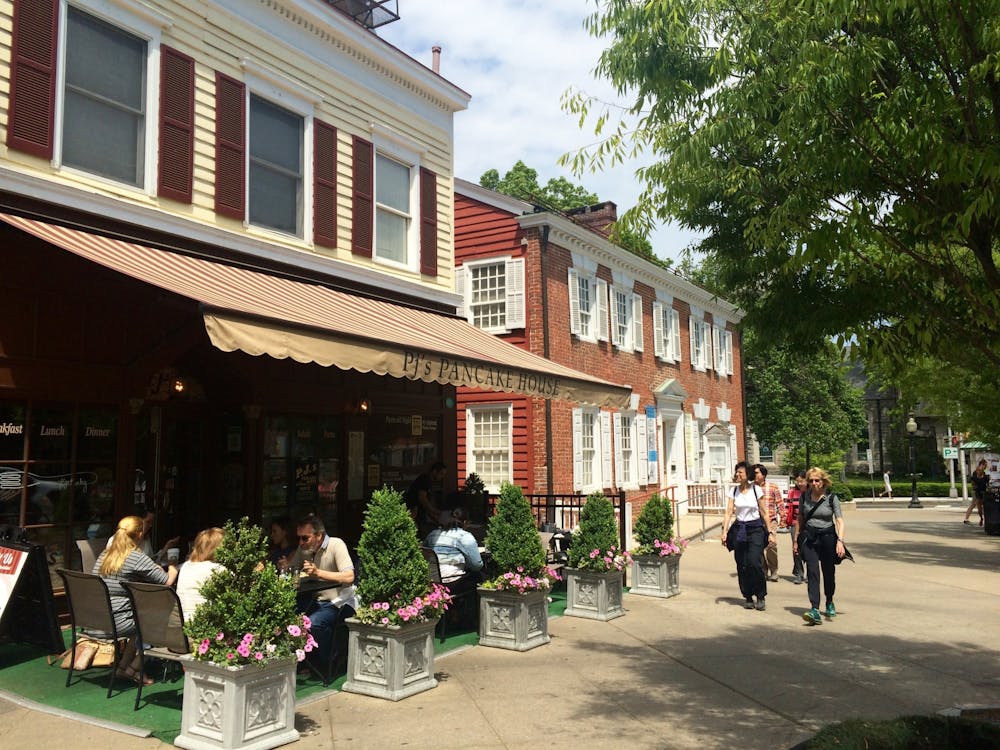Anyone who has taken an introductory course in American literature knows that, as a society, we have a severe mistrust of institutions. The very word — institution — doesn't conjure up images of benevolent bureaucracies committed to serving the needs of society and culture, as it very probably should, but instead of insane asylums forcing society to live under unjust regimes.
In depictions of American institutions we get insane asylums run by cold and unfeeling dictators, as in Ken Kesey's "One Flew Over the Cuckoo's Nest," and irrepressible and free-spirited individuals fighting to stay out of the viselike grip of bureaucracy, like in Saul Bellow's "The Adventures of Augie March."
Harold Pinter's "Hothouse," currently playing at Theatre~Intime and directed by Micah Baskir '03, deals with just those conceptions of institutions. If the work at first strikes you as a rehashing of well-worn ideas about the evils of institutions and their ever-increasing hold on daily American life (the take presented by Kesey and Bellow as well as in "1984" and even that "Simpsons" episode where the teachers eat their students), you will be pleasantly surprised by the play's originality.
To begin with, there is no hero for the audience to latch onto, no free-spirit that is eventually demeaned and absorbed by the all-powerful institutions.
Instead our cast of characters is the powerful elite in a particular institution — the doctors and administrators of a 'rest home' in which the patients are addressed by assigned numbers and kept locked in their rooms.
The humor of the play is also refreshing. Few us of us are able to laugh at R.P. McMurphy's lobotomy or Mustafa Mond's icy control over all of society in Huxley's "Brave New World," but because we are invited into the world of the institutional leaders in the play instead of being left to eye them suspiciously from across the room (or, as it were, from across the social hierarchy), we are invited to laugh at their ridiculousness.
The cast in this production does an excellent job of creating a tone of giddy and incessant unreality. Alexis Schulman '04, as Gibbs, projects an air of patronizing and skillful professionalism, and Jeremy Chan '05, as Lush, oozes sleaziness and underhanded malevolence.
The show, though, belongs to Cullen Hilkene '04 who plays Roote, the leader of this motley crew of administrators and doctors with such vibrancy and force that he had the whole audience entralled. Nodding his head and shucking his shoulders like a prizefighter working a crowd, he exudes a combination of energetic gusto, warmhearted innocence and impulsive hostility that was at all times confusing and spellbinding and pitch perfect.

Hilkene's characterization of Roote works so well because it gives us an image of institutional society being run not by a clever and calculating Cardinal Richelieu type, but an energetic and stupid cowboy. He's dangerous at times, but, in the end, is as much a victim of the system as anyone else. In the end, this leader is pushed around and manipulated by his underlings more than he does any pushing around.
This, of course, should make you think of a certain, contemporary leader of national politics, and Hilkene's southern accent and Texas swagger complete the allusion. That a portrait of George W. himself hangs on the back wall of the set would be redundant, had not Hilkene's face come to so eerily reflect the real thing by the end of the play.
I was impressed with the cast's ability to handle playwright Harold Pinter's distinctive language. Pinter has a style so unique that his characters are often said to speak Pinterese, but this cast was able to mine his use of tautologies and redundancies for the comedy that is held within. Chan seems particularly adept at finding the flow and inflection of his character's speech.
The set, reminding me so much of the works of surrealist painter Roberto Matta, was another of this production's triumphs. Matta's paintings are contradictory, fractured, and often inhumanly creepy, depicting sleek and scary figures (looking more like futuristic and trendy apartment furniture than human beings) who are shown performing operations or experiments on one another.

This set is broken into three levels, each so differently oriented that a sort of multiple-personality-disorder of place is established. In the center is Roote's office (all cool mauve and Victorian furnishings). On the left is a break room (that was startlingly white when lit up, seeming the epitome of sterile institutionalism), and on the right is a chair in a glass box towering above the audience on a raised platform (apparently some area for patient "therapy," which is really more like torture).
Like Matta's paintings, the set was disorienting and yet strangely recognizable, preparing us for a play that runs along familiar patterns most of the time, but often enough slips into currents that are creepy and foreign in their depictions of societies being controlled by inaccessible, out-of-control and unstable leaders.







